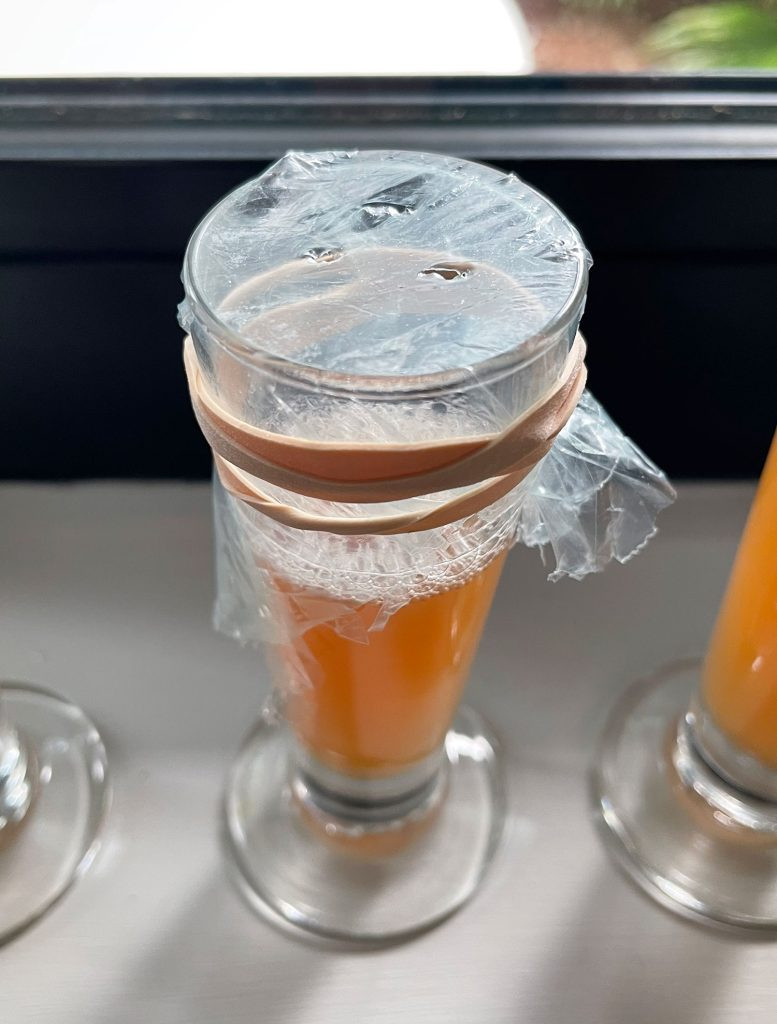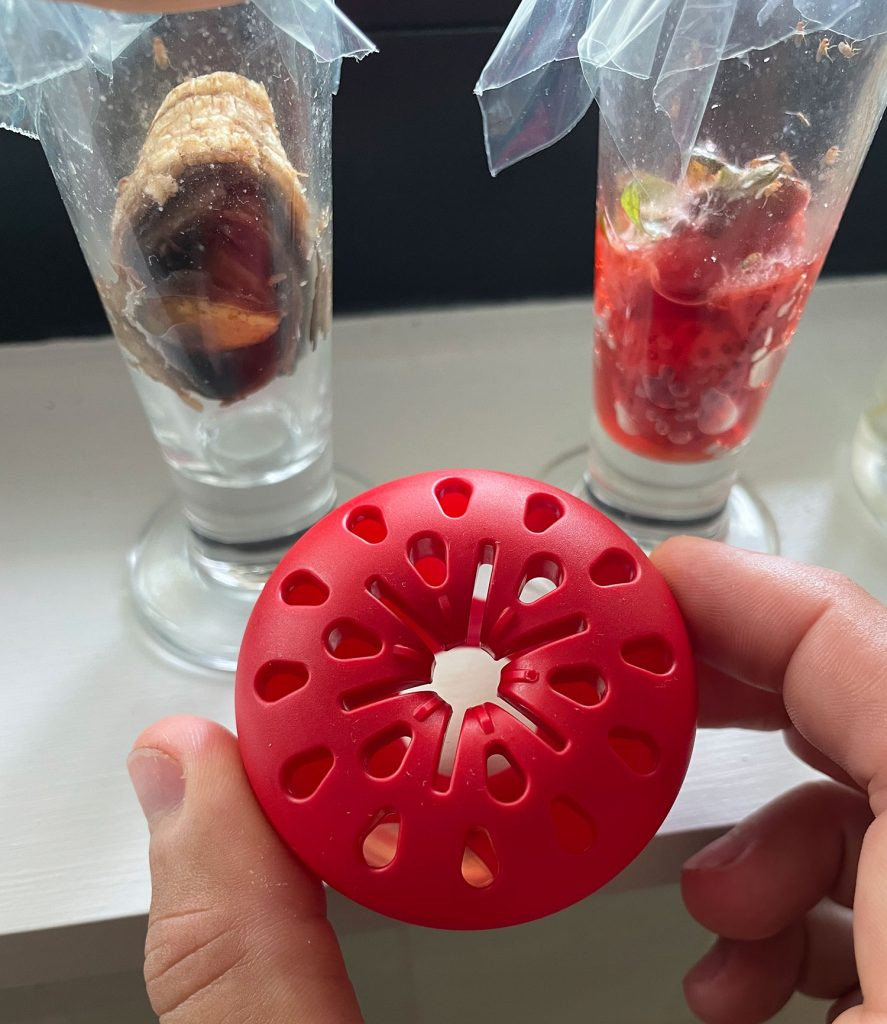Are fruit flies and gnats invading your space? Fruit fly and gnat infestations are a common nuisance, but flyermedia.net offers effective and simple solutions to reclaim your home. Discover how to eliminate these pests and prevent future outbreaks, ensuring a comfortable and pest-free environment with these insect and pest control options.
Table of Contents
- What Are Fruit Flies and Gnats?
- Identifying the Culprits: Fruit Flies vs. Gnats
- Why Are They Here? Understanding the Attraction
- Effective DIY Traps to Eliminate Fruit Flies and Gnats
- Store-Bought Solutions: When DIY Isn’t Enough
- Natural Repellents: Keeping Them Away
- Preventive Measures: Stopping Them Before They Start
- Deep Cleaning: Eliminating Breeding Grounds
- Professional Help: When to Call an Exterminator
- FAQ: Your Questions Answered About Fruit Flies and Gnats
1. What Are Fruit Flies and Gnats?
Fruit flies and gnats are small, winged insects often found buzzing around homes, particularly in kitchens. Fruit flies (Drosophilidae) are attracted to ripe, rotting, or fermenting fruits and vegetables. Gnats, on the other hand, are a broader category that includes fungus gnats (Sciaridae), which thrive in moist soil and feed on decaying organic matter, and other small flies that can be drawn to different sources of moisture and food. Understanding what attracts these pests is key to effective pest control.
2. Identifying the Culprits: Fruit Flies vs. Gnats
Distinguishing between fruit flies and gnats is essential for targeted pest control. Fruit flies are typically found near ripe fruit, have a tan or brownish color, and are about 1/8 inch long. Gnats, especially fungus gnats, are smaller, dark-colored, and often seen near houseplants or damp areas. Drain flies, another common type of gnat, resemble tiny moths and are found near drains and standing water. Correct identification ensures you’re using the right methods for pest management.
3. Why Are They Here? Understanding the Attraction
Fruit flies and gnats are attracted to different things, making it important to understand their individual preferences. Fruit flies are drawn to the sweet smell of fermenting sugars in overripe fruit, spilled juices, and even alcoholic beverages. Gnats, particularly fungus gnats, are attracted to moist soil, decaying leaves, and fungi, often thriving in overwatered houseplants. Drain flies are drawn to the organic matter that accumulates in drains. Eliminating these attractants is a crucial first step in getting rid of them.
4. Effective DIY Traps to Eliminate Fruit Flies and Gnats
Creating DIY traps is a cost-effective and environmentally friendly way to control fruit flies and gnats. These traps typically use a bait to lure the insects into a container from which they cannot escape. Here are some proven methods:
4.1. Apple Cider Vinegar Trap
Apple cider vinegar (ACV) is a potent attractant for fruit flies. Its sweet, fermented scent draws them in, while the trap prevents their escape.
Materials:
- Small jar or cup
- Apple cider vinegar
- Dish soap (optional)
- Plastic wrap or paper cone
- Rubber band (if using plastic wrap)
- Toothpick (if using plastic wrap)
Instructions:
- Pour about 2 inches of apple cider vinegar into the jar.
- Add a drop or two of dish soap. The soap reduces the surface tension, causing the flies to drown.
- Cover the jar with plastic wrap, securing it with a rubber band. Alternatively, create a paper cone with a small opening at the bottom and place it into the jar.
- Poke a few small holes in the plastic wrap with a toothpick.
- Place the trap near the area where fruit flies are most active.
 DIY Fruit Fly Trap With Apple Cider Vinegar And Plastic
DIY Fruit Fly Trap With Apple Cider Vinegar And Plastic
4.2. Dish Soap Trap
This simple trap uses the sweet scent of fruit mixed with dish soap to trap fruit flies and gnats.
Materials:
- Small bowl or dish
- Fruit (such as overripe banana or apple)
- Dish soap
Instructions:
- Place a piece of overripe fruit in the bowl.
- Add water to cover the fruit.
- Add a few drops of dish soap and mix gently.
- Place the bowl in the affected area.
4.3. Wine Trap
Fruit flies are also attracted to wine, making it an effective bait for a simple trap.
Materials:
- Empty wine bottle with a small amount of wine at the bottom
Instructions:
- Leave a small amount of wine (about an inch) in the bottle.
- Place the bottle in the area where fruit flies are present. The narrow neck of the bottle makes it difficult for the flies to escape.
4.4. Rotting Fruit Trap
Using rotting fruit as bait is a direct way to attract fruit flies, capitalizing on their natural attraction.
Materials:
- Jar or container
- Rotting fruit (banana peel, apple core, etc.)
- Plastic wrap
- Toothpick
- Rubber band
Instructions:
- Place the rotting fruit in the jar.
- Cover the jar with plastic wrap, securing it with a rubber band.
- Poke a few small holes in the plastic wrap.
- Place the trap in the infested area.
4.5. Candle Trap
This method is best used with caution, as it involves an open flame.
Materials:
- Candle
- Candlestick or holder
- Water
- Dish soap
Instructions:
- Place the candle in the candlestick and add water to the base.
- Add a few drops of dish soap to the water.
- Light the candle. The fruit flies are attracted to the flame, fall into the soapy water, and drown.
Caution: Never leave a burning candle unattended.
5. Store-Bought Solutions: When DIY Isn’t Enough
When DIY traps aren’t providing sufficient relief, store-bought solutions offer effective alternatives. Fruit fly traps, sticky traps, and insecticide sprays are readily available at most home improvement and grocery stores. These products are designed to attract and kill fruit flies and gnats, providing a more direct approach to pest control. According to the EPA, when using insecticides, always follow the instructions on the label and ensure proper ventilation.
 Terro Fruit Fly Apple Trap With No Fruit Flies In It
Terro Fruit Fly Apple Trap With No Fruit Flies In It
6. Natural Repellents: Keeping Them Away
Natural repellents can help deter fruit flies and gnats without the use of harsh chemicals. Essential oils like peppermint, eucalyptus, and lemongrass are known to repel insects. Placing cotton balls soaked in these oils around the affected areas can help keep pests away. Additionally, certain plants like basil, mint, and lavender can act as natural repellents when placed near windows and doorways.
7. Preventive Measures: Stopping Them Before They Start
Preventing fruit fly and gnat infestations involves reducing their access to food and breeding sites. Regularly clean kitchen surfaces, dispose of overripe fruit, and take out the trash frequently. Store fruits and vegetables in the refrigerator whenever possible. According to the USDA, washing produce as soon as you bring it home can help remove any eggs or larvae that may be present.
8. Deep Cleaning: Eliminating Breeding Grounds
Deep cleaning is essential for eliminating potential breeding grounds for fruit flies and gnats. Pay special attention to areas where food particles and moisture accumulate, such as under sinks, in drains, and around garbage disposals. Use a stiff brush and a solution of hot water and vinegar to scrub drains and garbage disposals regularly. Clean and dry under appliances like refrigerators and dishwashers to prevent moisture buildup.
9. Professional Help: When to Call an Exterminator
In some cases, fruit fly and gnat infestations may be too severe or persistent to handle with DIY methods or store-bought solutions. If you’ve tried multiple approaches without success, or if you suspect a larger infestation, it may be time to call a professional exterminator. Pest control professionals have the expertise and tools to identify the source of the infestation and implement effective treatment plans.
10. FAQ: Your Questions Answered About Fruit Flies and Gnats
-
What are fruit flies and gnats attracted to?
- Fruit flies are attracted to ripe, rotting, or fermenting fruits and vegetables, as well as sugary liquids. Gnats, especially fungus gnats, are attracted to moist soil and decaying organic matter.
-
How quickly can fruit flies multiply?
- Fruit flies can multiply rapidly. A female can lay hundreds of eggs, which hatch within 24-30 hours. The entire life cycle, from egg to adult, can be completed in about a week.
-
Can fruit flies bite humans?
- No, fruit flies do not bite humans. They are primarily a nuisance because they contaminate food and can be very persistent.
-
How do I get rid of gnats in my houseplants?
- To get rid of fungus gnats in houseplants, allow the soil to dry out between waterings. You can also use sticky traps or apply a soil drench with Bacillus thuringiensis israelensis (Bti), a biological insecticide.
-
What essential oils repel fruit flies and gnats?
- Essential oils like peppermint, eucalyptus, lemongrass, and lavender are known to repel fruit flies and gnats.
-
Are fruit flies dangerous?
- Fruit flies are not typically dangerous, but they can carry bacteria and pathogens that can contaminate food. It’s important to prevent them from infesting your kitchen and food preparation areas.
-
How can I prevent fruit flies from entering my home?
- To prevent fruit flies, keep your kitchen clean, store fruits and vegetables in the refrigerator, take out the trash regularly, and seal any cracks or openings in windows and doors.
-
What is the best homemade fruit fly trap?
- The apple cider vinegar trap is one of the most effective homemade traps. The sweet scent attracts fruit flies, and the soap reduces surface tension, causing them to drown.
-
How long does it take to get rid of a fruit fly infestation?
- With consistent use of traps and preventive measures, you can typically get rid of a fruit fly infestation within a week or two.
-
Can I use bleach to get rid of fruit flies in drains?
- While bleach might seem like a quick solution, it’s generally not recommended for eliminating fruit flies or gnats in drains. Bleach can be harmful to your pipes and the environment.
- A better approach is to use a mixture of boiling water and vinegar or baking soda followed by vinegar. These methods are safer and more effective for breaking down organic matter that attracts these pests.
- If you have persistent drain fly issues, consider using a drain cleaner specifically designed to eliminate organic buildup without damaging your plumbing.
By understanding what attracts fruit flies and gnats and implementing these strategies, you can effectively manage and prevent infestations. Visit flyermedia.net for more tips and resources on pest control and maintaining a healthy home environment.
Are you struggling with fruit flies and gnats in your home? flyermedia.net offers a wealth of information and resources to help you identify, eliminate, and prevent these pests. Visit our website today to discover effective DIY solutions, explore store-bought options, and learn how to maintain a pest-free environment. Take control of your home and enjoy a comfortable, bug-free living space!